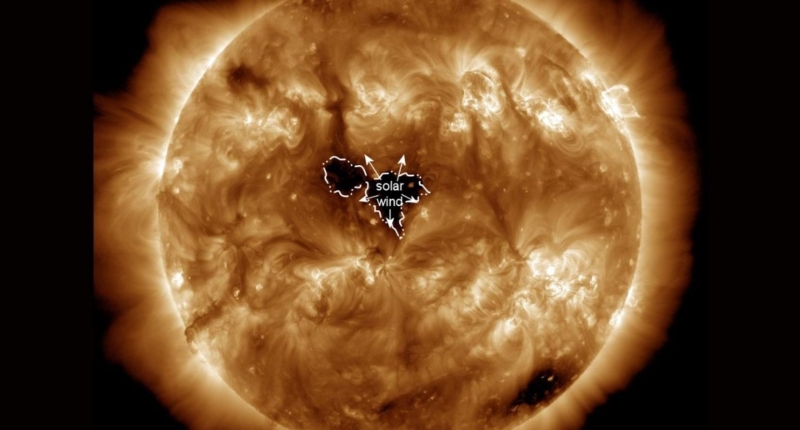On March 29, an X1.2 solar flare occurred, resulting in an R3 HF radio blackout event. The flare, which belongs to the X-class, is the most intense classification for solar flares. The event caused a loss of radio contact for about an hour on the sunlight side of Earth. Earth was also hit by the most powerful solar storm in nearly six years on March 24, a severe G4 geomagnetic storm that can cause disruptions in power systems and spacecraft operations. A geomagnetic storm occurs due to a significant exchange of energy between the solar wind and Earth’s space environment. A coronal hole, about 20-30 times the size of Earth, is responsible for a solar storm that could hit Earth on March 31. The hole is an area of open, unipolar magnetic field that allows the solar wind to escape more easily into space, resulting in streams of fast solar wind.
Massive Coronal Hole 20-30 Times Bigger Than Earth Could Cause Solar Storm on March 31, 2023
On March 31, 2023, a solar storm caused by a massive coronal hole in the Sun’s atmosphere may hit the Earth. This coronal hole, 20-30 times the size of Earth and about 300,000 to 400,000 kilometers across, is responsible for gaseous material flowing towards our planet, resulting in a stream of solar wind heading for Earth. The coronal hole facing our planet, as reported by spaceweather.com, may lead to a display of Arctic auroras, which are a spectacular natural phenomenon.
Understanding Coronal Holes
A coronal hole is a dark, cooler, and less dense region in the solar corona that can be seen in extreme ultraviolet and soft X-ray solar images. According to the National Oceanic and Atmospheric Administration (NOAA), it is an area of open, unipolar magnetic field that allows the solar wind to escape more easily into space. This escape results in streams of fast solar wind that can affect our planet.
Co-rotating Regions and Coronal Mass Ejections
Ahead of a coronal hole high-speed stream is a co-rotating interaction region (CIR), which forms due to the interaction between slower ambient solar winds and the high-speed stream. The NOAA predicts that the coronal hole high-speed stream influences will result in an increase in the solar wind speed. Other coronal mass ejection (CME) influences will also contribute to this occurrence, which began by late March 23.
How Big is This Coronal Hole?
According to Alex Young from NASA’s Goddard Space Flight Center, the coronal hole is about 20-30 times the size of Earth, or about 300,000 to 400,000 kilometers across. Business Insider reported this finding, stating that the hole’s size is equivalent to 20-30 Earths lined up back-to-back.
The Potential Impact of the Solar Storm
Since only a minor stream of solar wind is heading towards Earth, the resulting solar storm is likely to be less severe. Nevertheless, this situation may lead to a display of Arctic auroras, which are a natural phenomenon that occurs when solar wind interacts with Earth’s magnetic field.
X1.2 Solar Flare Results in R3 HF Radio Blackout
On March 29, an X1.2 solar flare occurred from a region on the Sun at 8:03 am IST. An X1.2 solar flare belongs to the X-class, which is the most intense classification for solar flares. The flare resulted in an R3 HF radio blackout event, causing a loss of radio contact for about an hour on the sunlight side of Earth.
The Effects of G4 Geomagnetic Storm on Earth
Earth was struck by a severe G4 geomagnetic storm on March 24, the most powerful solar storm in nearly six years. Geomagnetic storms occur due to a significant exchange of energy between the solar wind and Earth’s space environment. G4 storms can cause disruptions in power systems and spacecraft operations.
Don’t miss interesting posts on Famousbio










